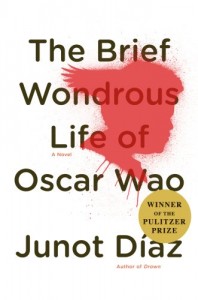It is what it is, and it ain’t nothin’ else. . . . Everything is clearly, openly, plainly delivered.
— Dan Flavin
(applicable to all minimalism?)
It is what it is, and it ain’t nothin’ else. . . . Everything is clearly, openly, plainly delivered.
— Dan Flavin
(applicable to all minimalism?)
Saw Reggie’s latest show Transition last week at the public.
Wow. I think “sasquatch in the night” my be my new fav though it’s hard to beat “F*$K,S#%T,STACK”. I gotta hand it to him, this guy really knows what he’s doing. He wraps an intellectual foray into deconstructing contemporary performance and culture into an entertaining, accessible, easily swallowable, package for the masses. It’s hard not to be entertained, but as far as I am concerned there is also a lot of depth to what he is doing. I felt there was more of a through line holding everything together and more improv in his last show disinformation, but nonetheless Transition was a very polished assault on our minds. Reggie Watts is a very compelling stage presence no matter what he is doing.
And don’t forget he is also an amazing beat boxer:
Reggie Watts: Out Of Control from Jakob Lodwick on Vimeo.
img above from flickr, pica’s stream
 A wonderful gem of a book, in the tradition of 100 years of solitude…or any other novel where generations intertwine and the past has a great influence on the present without the knowledge of it’s current inhabitants. Destiny manifested in our parents’, grand-parents’, and even great grand-parents’ minute decisions all have a great hold on us. This is a great read.
A wonderful gem of a book, in the tradition of 100 years of solitude…or any other novel where generations intertwine and the past has a great influence on the present without the knowledge of it’s current inhabitants. Destiny manifested in our parents’, grand-parents’, and even great grand-parents’ minute decisions all have a great hold on us. This is a great read.
You also learn, at least I did, a lot of previously unknown history of the Dominican Republic through long and sometimes multi-page, quite informative, footnotes. Oh yes, and not many books out there that are so un-self-conciously geeky (Sauron and Akira anyone?). What a wondrous mix!
I almost forgot, Today, January 10th is Tintin’s Birthday! Happy Birthday TINTIN!
I love Tintin. Of course anybody who loves him has to be a little conflicted. I think acknowledging the not so positive parts and celebrating the rest, which are so great, is the best path.
I also heard more chatter that a movie might finally get made. Can’t wait for a movie version.

Attention White People* you must see this show!
It will make you uncomfortable. There are token white people in it and Young Jean Lee secretly hates you. In fact all minorities secretly hate white people. You may think you are a special white person, who is immune to issues of race, you don’t see color. Well you will if you go see this show and you will also be uncomfortable. A little minstrel? Maybe some incest or fecal jokes will make you cringe, then. No? How about being called out on your color-blindness?
If you happen to not be white, you should also go, you will get a good laugh! Lee is simply one of the most brilliant people in this field to deal with race, and although the show seems a little unbalanced and composed of two distinct halves, in the end, hopefully you will all have learned something about yourselves and how you react when confronted with race issues head on.
* I am one. If you need help figuring out if you are one this might help.
Here’s an interesting art project from turbulence.org:

“Tumbarumba is an add-on for Firefox web browsers. It quietly sits in the background, occasionally inserts a fragment of a story into a webpage that is being viewed. The result is an absurd sentence that is reminiscent of the surrealist exquisite corpse game. If the inserted fragment (we call the fragments “tumbarumbas”) is spotted and clicked upon, the entire story will emerge and eventually take over the page.”
I love projects that deal with disrupting and exposing the workings of the internet (see Mark Napier‘s Shredder or Riot projects), and I think this one is a great idea. I’m just not sure if this one is very successful. I think the digital interruption work is really great, but I think the content and the context are at odds with each other and it’s hard to relate the two.